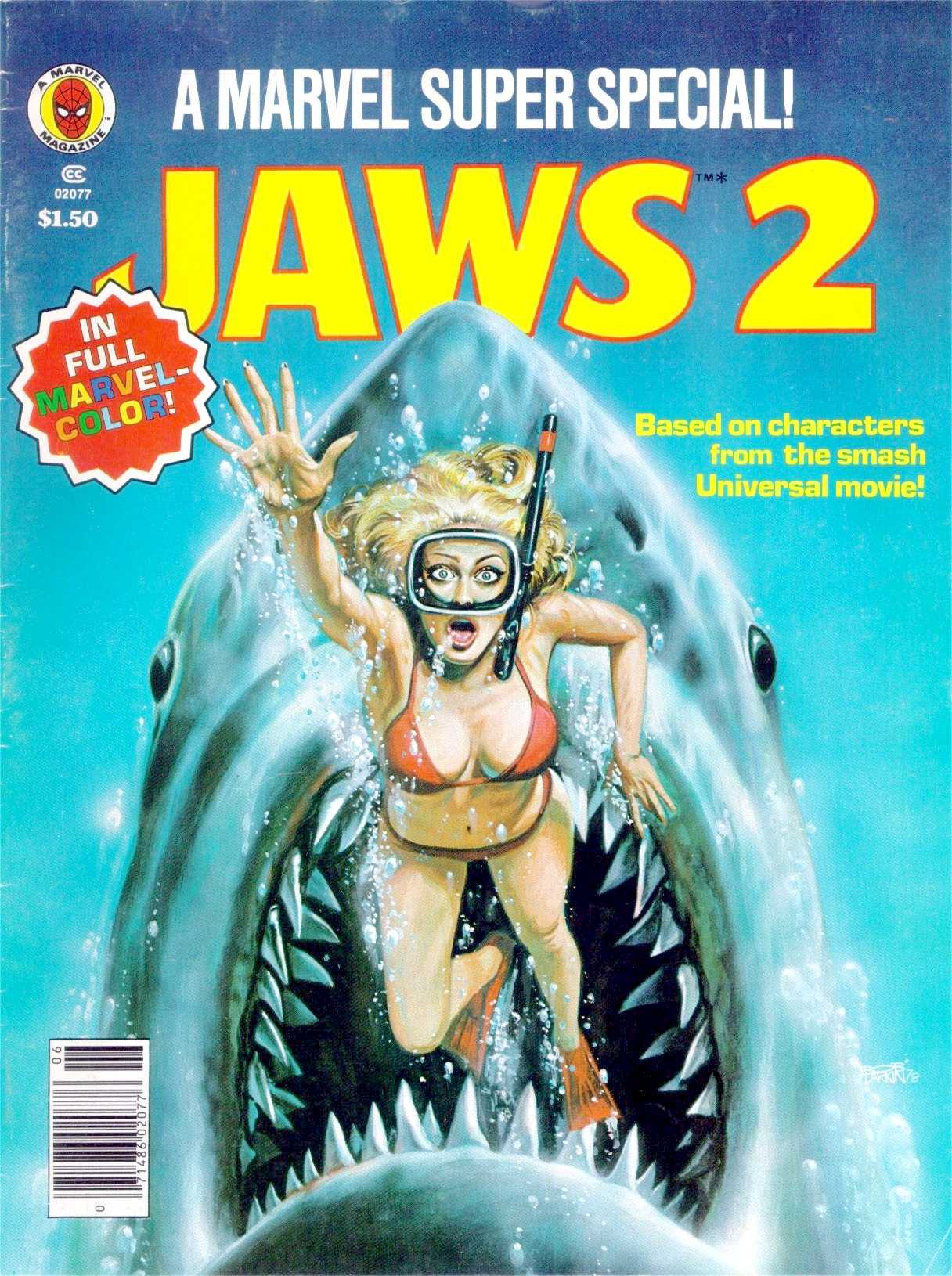
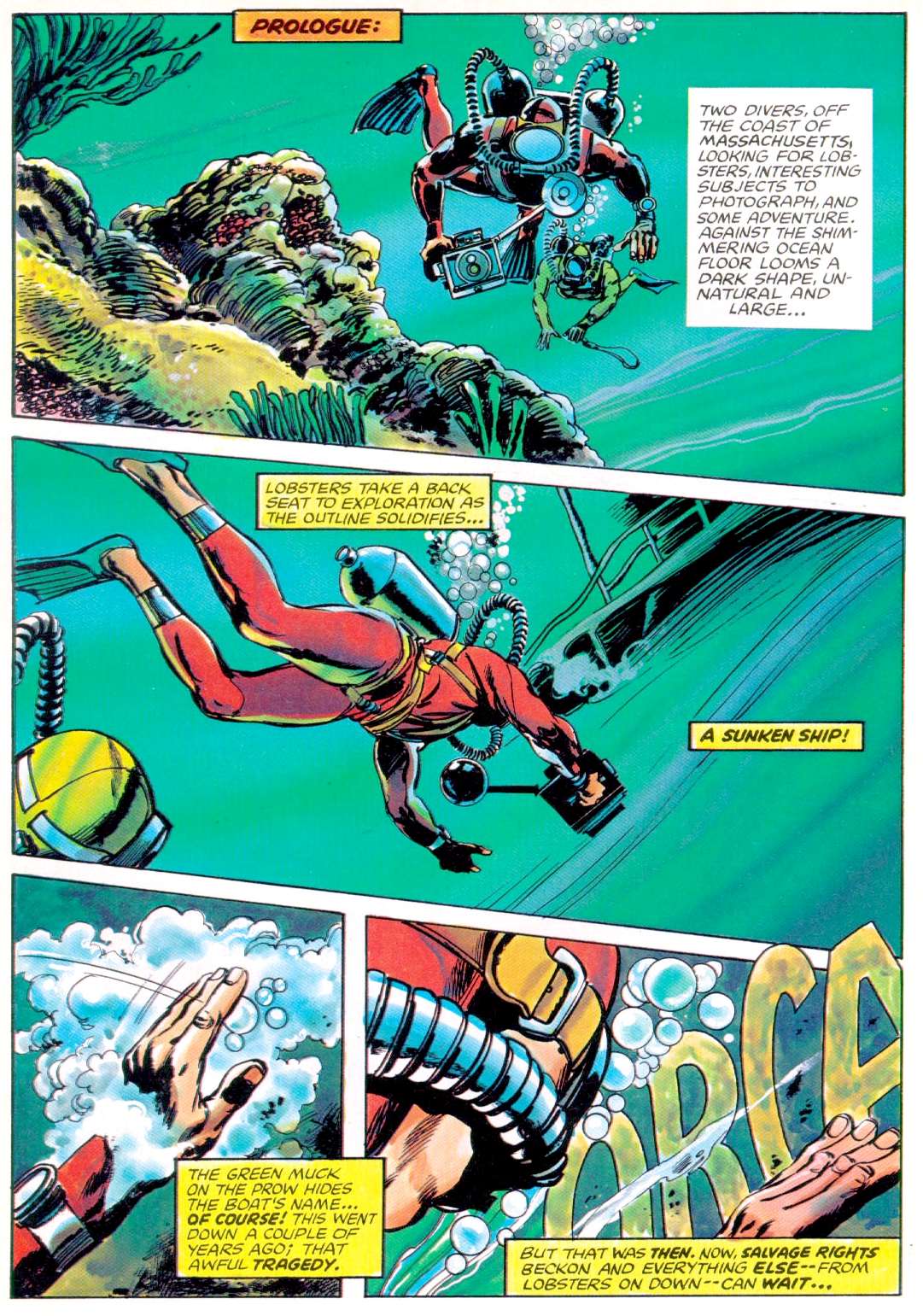
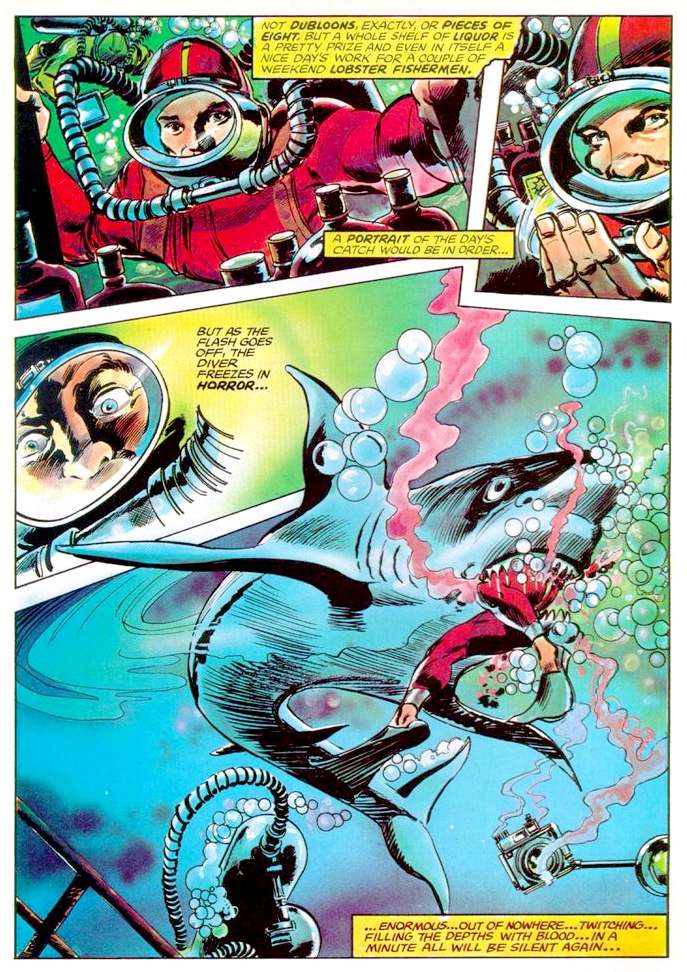
The
graphic novel adaptation by Marvel, of Peter Benchley's Jaws, a great
white that terrorizes the coastal community at Amity. In this media
review, the Jaws 2 film and subsequent graphic novel.
The
first Jaws film is a virtual masterpiece in telling a story, with
minimal input from an animatronic shark called Bruce (fortunately), the
weak link in the film. Steven Spielberg
carefully crafted his shooting to make up for Bruce not working. The
film was almost a flop, until the absolutely brilliant sound track was
added, the signature for impending shark attack. Jaws
2 attempts to exploit some parts of the Jaws original, but as sequels
go, had limited success. We can though imagine the producers wanting to
capitalize on the success of the first film with as many of the original
cast as possible.
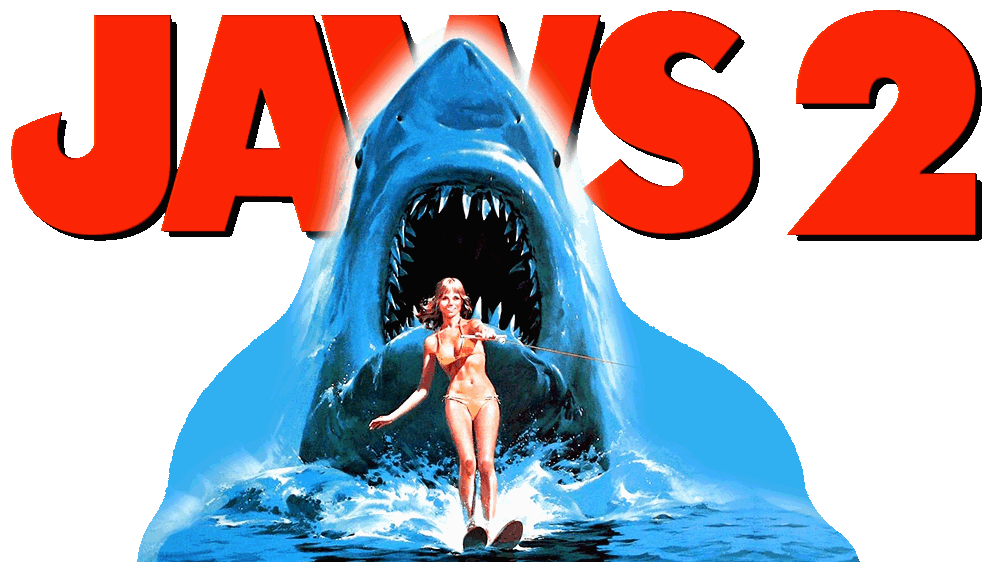
Unfortunately,
the direction relies on takes where the camera is still, somewhat
limiting the feel of movement that is so necessary for an audience
today. Very occasionally there is a tense moment. The lack of a decent
sound track is a major shortcoming. The body count is staggering. The
shark must have been really hungry.
Each Jaws film showcases a giant Great White Shark (Carcharodon carcharias) in Jaws, Jaws 2, Jaws 3-D and
Jaws: the Revenge. Each shark is a different shark in every film although the race is the same, and all have a size of about 20 to 30 feet in length.
Because in movies bigger is better. Hence King Kong, Godzilla and the
Kaiju in Pacific Rim. All good film concepts and mostly well executed,
on fairly lavish budgets.
Jaws first appeared in the novel by
Peter Benchley before
Steven Spielberg adapted it into a motion picture. In the movies, the sharks are much larger than the real animal and during the course of the series, they
are shown to have a cunning intellect and an agenda, other than simply
feeding.
The shark is the playable character in the video games Jaws Unleashed and Jaws: Ultimate Predator.


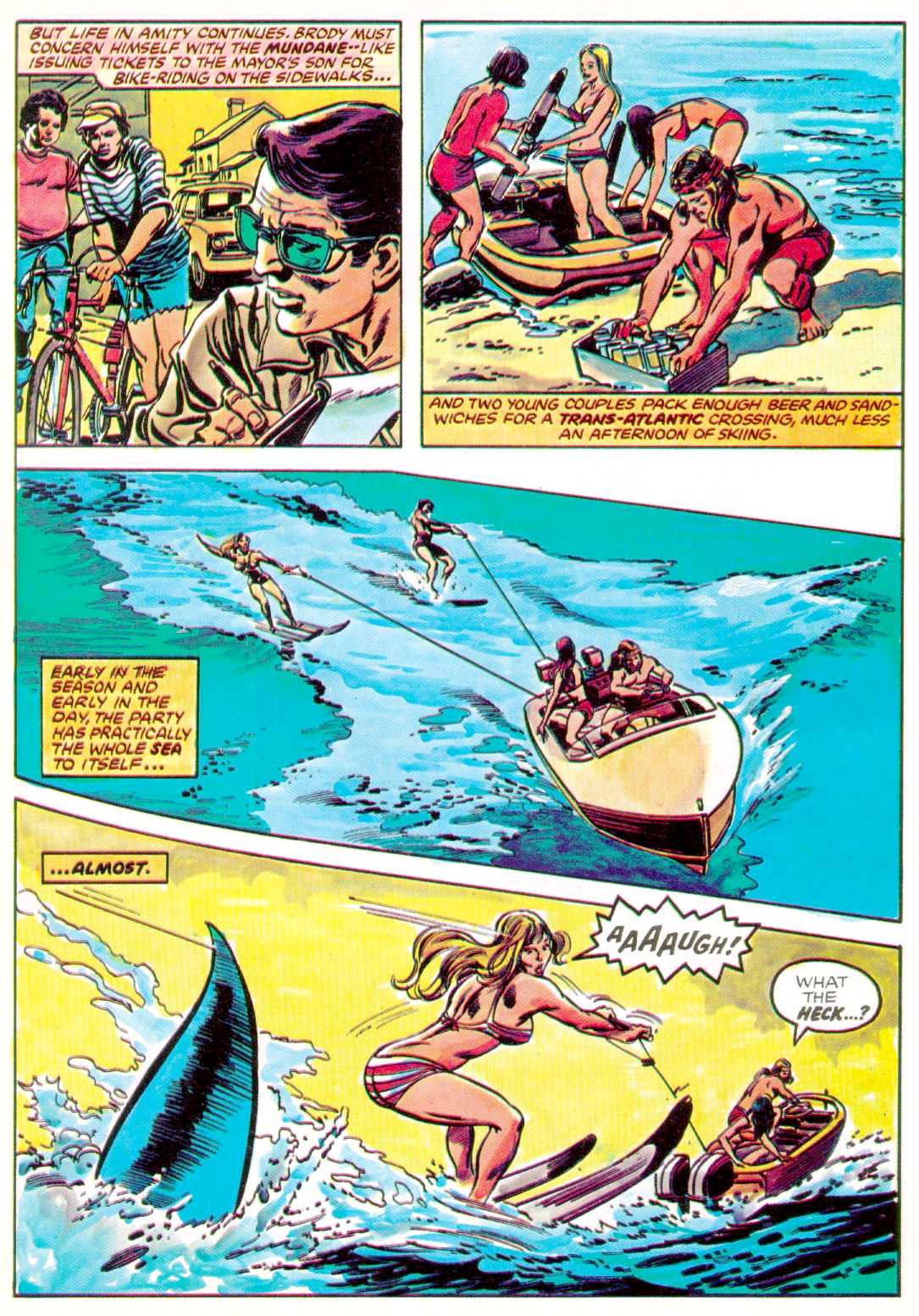
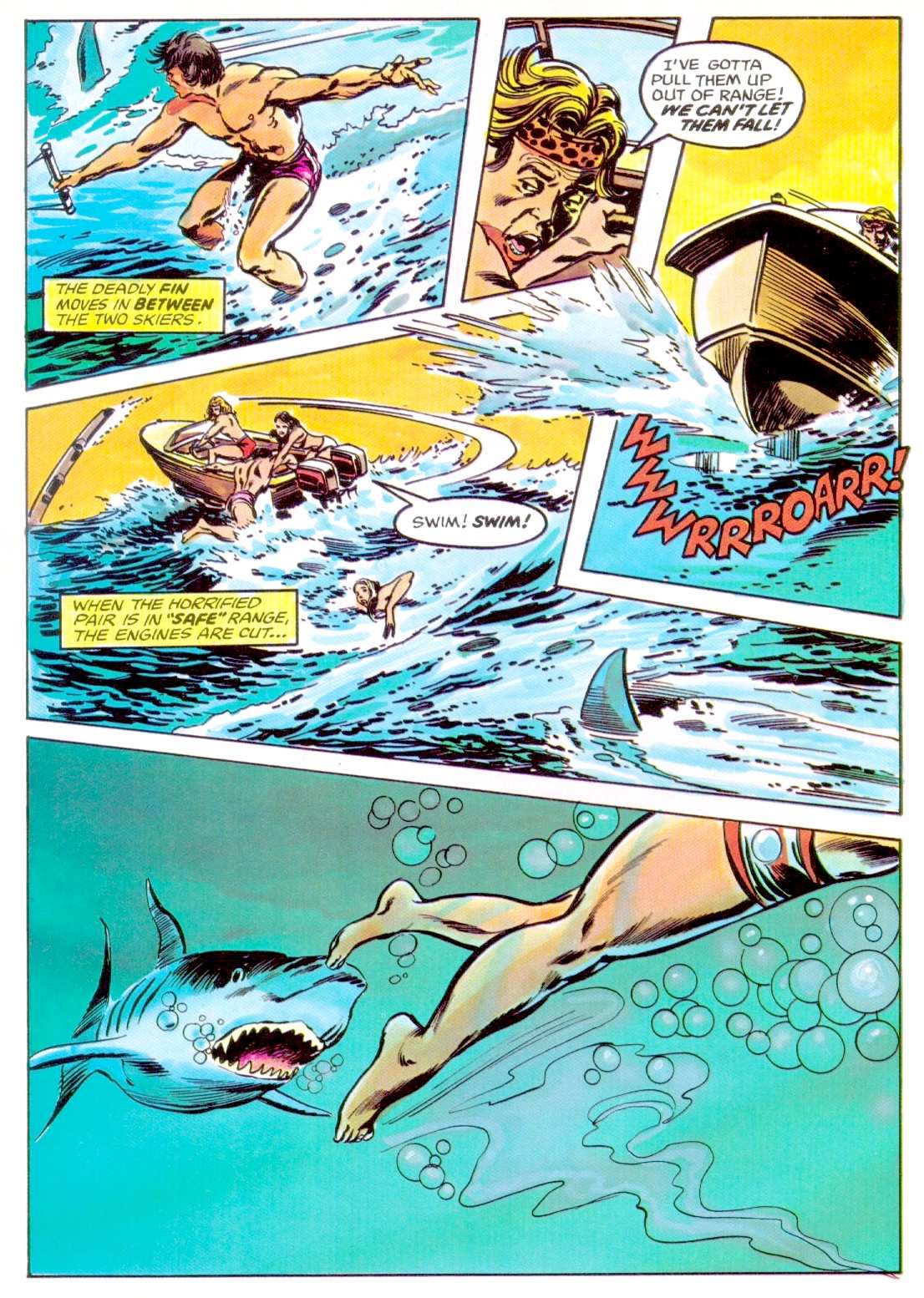
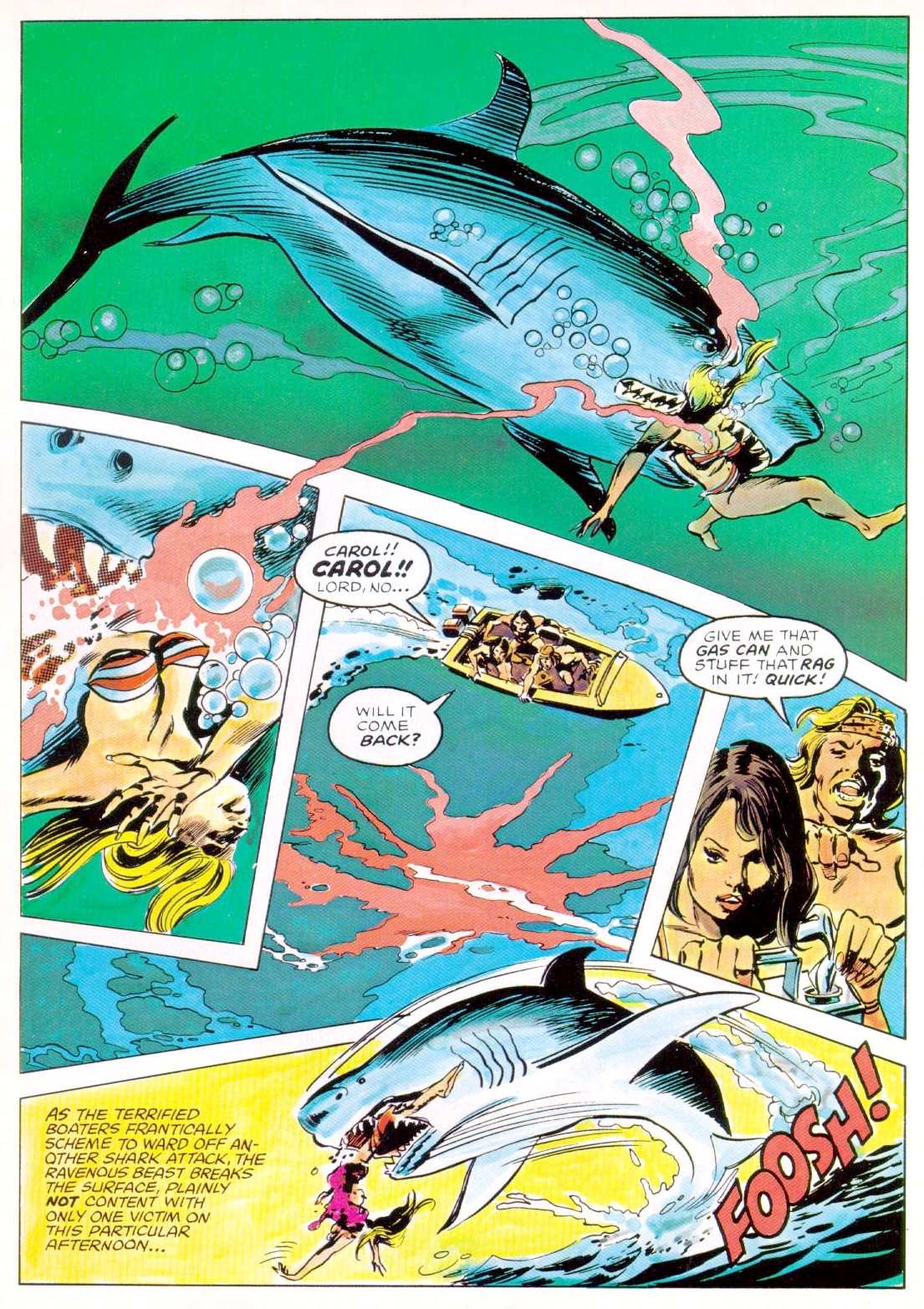
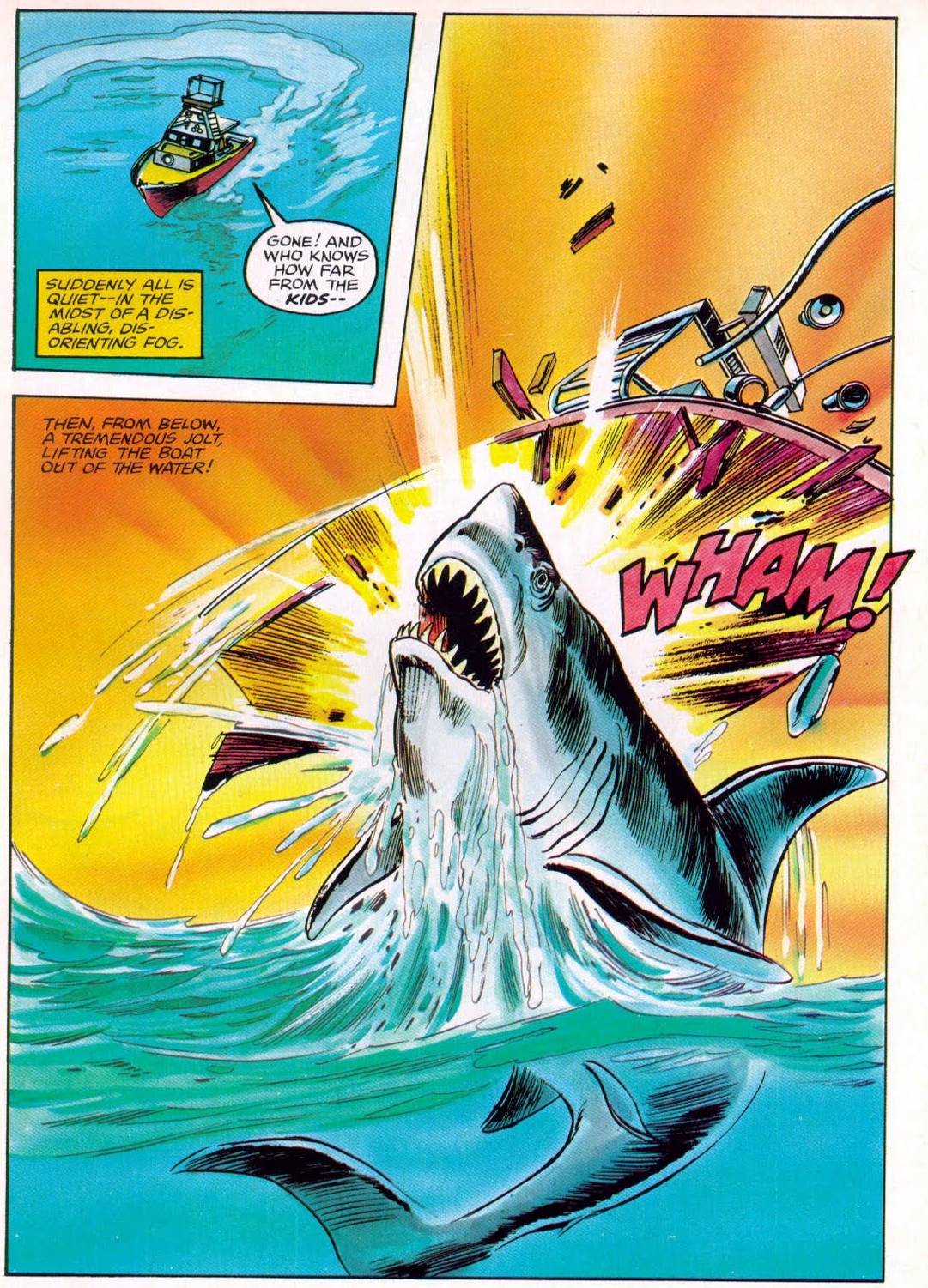
The
artwork is more than adequate, not of the superhero kind, more down to
earth and graphic novel rather than comic. But the Point of View (POV)
or focus, is well drawn and inked, sufficient to tell the story and make
the read enjoyable. In fact with a good imagination the graphic novel is
probably better than the film.
Though none of the sharks have official names, all of them have been given monikers to differentiate them from each other. The
animatronic sharks in the first film were nicknamed "Bruce" by the film crew, after Steven Spielberg's lawyer.
Whereas the sharks in Jaws 2 were nicknamed "Brucette" by fans. On the set, keeping in tradition with the first film, the two puppet sharks made for the production were known as Bruce Two, "Fidel" (unburned) and "Harold" (burned), the latter after David Brown's Beverly Hills lawyer. The mother shark from Jaws 3-D was nicknamed "Brucetta". The juvenile shark from Jaws 3-D was named Danny in the movie. The shark in Jaws: The Revenge has no official nickname, but has been dubbed "Vengeance" by fans, as this shark is seeking vengeance on Chief Brody's family.
Additionally, the name "Jaws" has been attributed to the
sharks (though this is technically incorrect, as this is the title of the films and the
sharks are never referred to as such in the films).
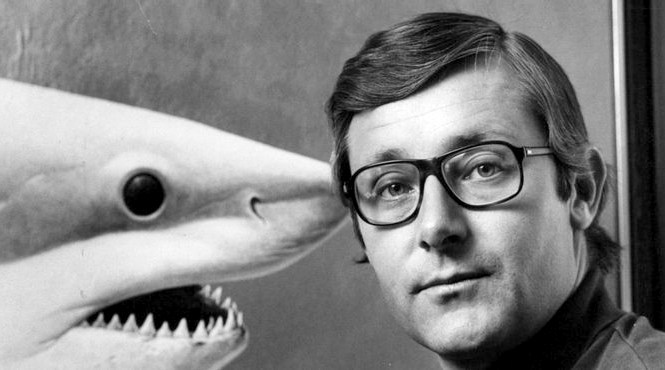
JAWS
AUTHOR - Peter Benchley almost gave up writing. When future Jaws author, Peter Benchley, walked into a book publishers’ office in 1971, he had two pitches left before quitting as a writer. One of
them was an idea from his childhood fascination with sharks. This
concept hooked the publishers. What the author could not have guessed, was the indelible scar it would leave on his heart, forever.
Why? Because Jaws helped unleash a wave of destructive hunting on sharks that couldn’t rival half a billion years of evolution.
Jaws helped to fuel hatred for the magnificent creatures. Granted, that
sharks already had a tarnished reputation from episodes such as the
sinking of the Indianapolis.
SHARKS
WERE THE REAL VICTIMS OF THE CLASSIC THRILLER
While Jaws has cemented itself as the original blockbuster film, it also had a tragic impact by changing the public perception of sharks.
Jaws changed more than the movies. It helped usher in a new mainstream fascination while fueling fear and disdain for a magnificent and fatally misunderstood animal. The reason why is complicated, and in many ways, it began before Jaws.
45 years ago the first true summer blockbuster gobbled the world's attention, immediately becoming the biggest movie of all time.
Peter Benchley’s novel, Jaws, hit shelves barely a year earlier, solidifying it as a best seller for months. When the paperback landed soon after, over five million more copies more were sold. At the time, fear was already building. But the mind movies of flashlight readers did little to prepare for the raw realism soon brought to life.
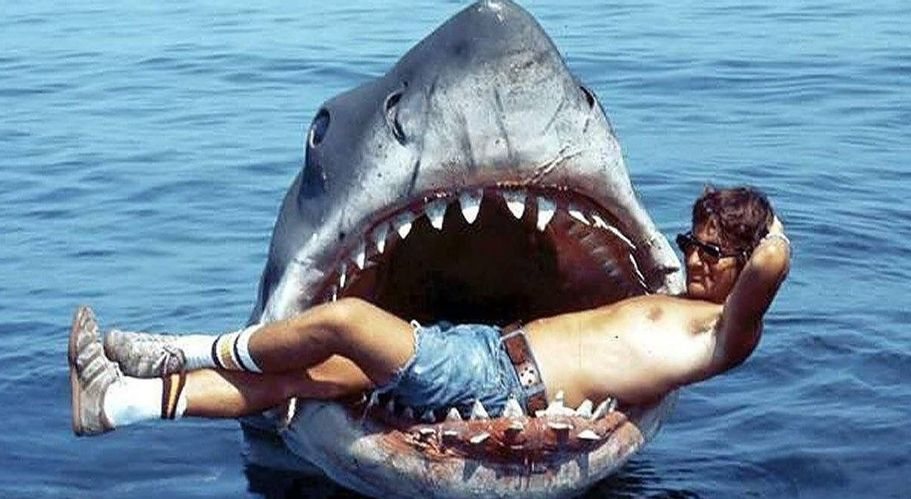
It was the visionary power of little known director Steven Spielberg that captured so vividly the terrors of Benchley’s imagination. Spielberg brought Jaws to life, but it was master composer Sir John Williams who gave it feeling. His imposing theme orchestrated an unparalleled sense of dread and fear. It ensured Spielberg delivered a masterstroke of psychological warfare on moviegoers.
Fear, left unchecked, inflates like a balloon. Aided by a powerful, haunting theme fueling the viewer’s primal fears, we barely notice the shark only appears an hour into the film. Audiences had already created the monster in their minds, the movie validated it -- and the impression never left. Jaws aided the rapid expanse of fishy fables about great whites that pushed audiences farther from reality.
The mob mentality of fear and hate was quickly enshrined. Few left the movie feeling bad that the shark exploded on screen, especially after watching Jaws eat a child. So why did Peter Benchley famously proclaim later in life, “Knowing what I know now, I could never write that book today?” Well, let’s check the numbers.
The movie ushered in an immediate gold rush of sport shark fishing on a cataclysmic scale. It exploded the instant theatres emptied. Millions of sharks were wrangled out of east coast waters for sport, in a fishing frenzy that decimated populations. It also fueled commercial shark fishing, encouraged by the US government until the end of the 1980s. The damage inflicted remains, with some Atlantic shark populations still down over 80 percent. With commercial fishing, not sport anglers mainly to blame, where does the movie fit into that equation?
Misguided fear and anxiety about sharks helped extinguish any outcry against the industrial harvesting of an ugly creature. Sharks aren’t cuddly and offer little emotional value to the mainstream. That lack of empathy still proves a death sentence for these essential apex predators to our global ecosystem. The scalability of the ignored horror against sharks is what is so gripping. How else can more than 100 million sharks still end up finned for soup and medicine?
Sharks have been growing as fearsome figures in America since a killer shark terrorized New Jersey almost 100 years ago. Benchley grew up hearing stories about that summer of 1916, fueling his boyhood shark obsession while fishing with his dad. As an adult, he caught wind of the exploits of Frank Mundus. The Long Island fisherman was legendary for his battles with big sharks. With him in mind, Benchley found his inspiration for Captain Quint.
But Benchley’s vision really came into focus after 1971’s landmark documentary film, Blue Water, White Death. It displayed first of its kind footage of great white sharks at their most terrifying. The footage captivated audiences
- both Benchley and Spielberg alike. But the amazing video wasn’t enough to fill the knowledge gaps about sharks. A trail of disinformation that inadvertently helped lead to the pages of Benchley’s book. Which, fun fact, only got its title, Jaws, barely 20 minutes before being published. Thankfully, just like the day Jaws hit the press, time hasn’t fully run out on sharks.
Much has been done in recent years to turn the tide, as it were, and help dwindling shark stocks recover. Sportfishing has turned away from large-scale catch and release or killing for sport. It's still popular in some parts of North America, and much of the world, but nothing like it was. However, a grotesque amount of commercial harvesting, both legal and illegal, continues in many areas, despite rising opposition.
Even now, it still feels hard to convey the sheer magnitude of this continual tragedy, on such an epic scale. It’s a life or death battle, lasting decades, impacting one of the earth’s oldest and most magnificent specimens. It almost seems like the kind of thing that would be great material for a summer blockbuster.
By Sean Ellard June
28 2020
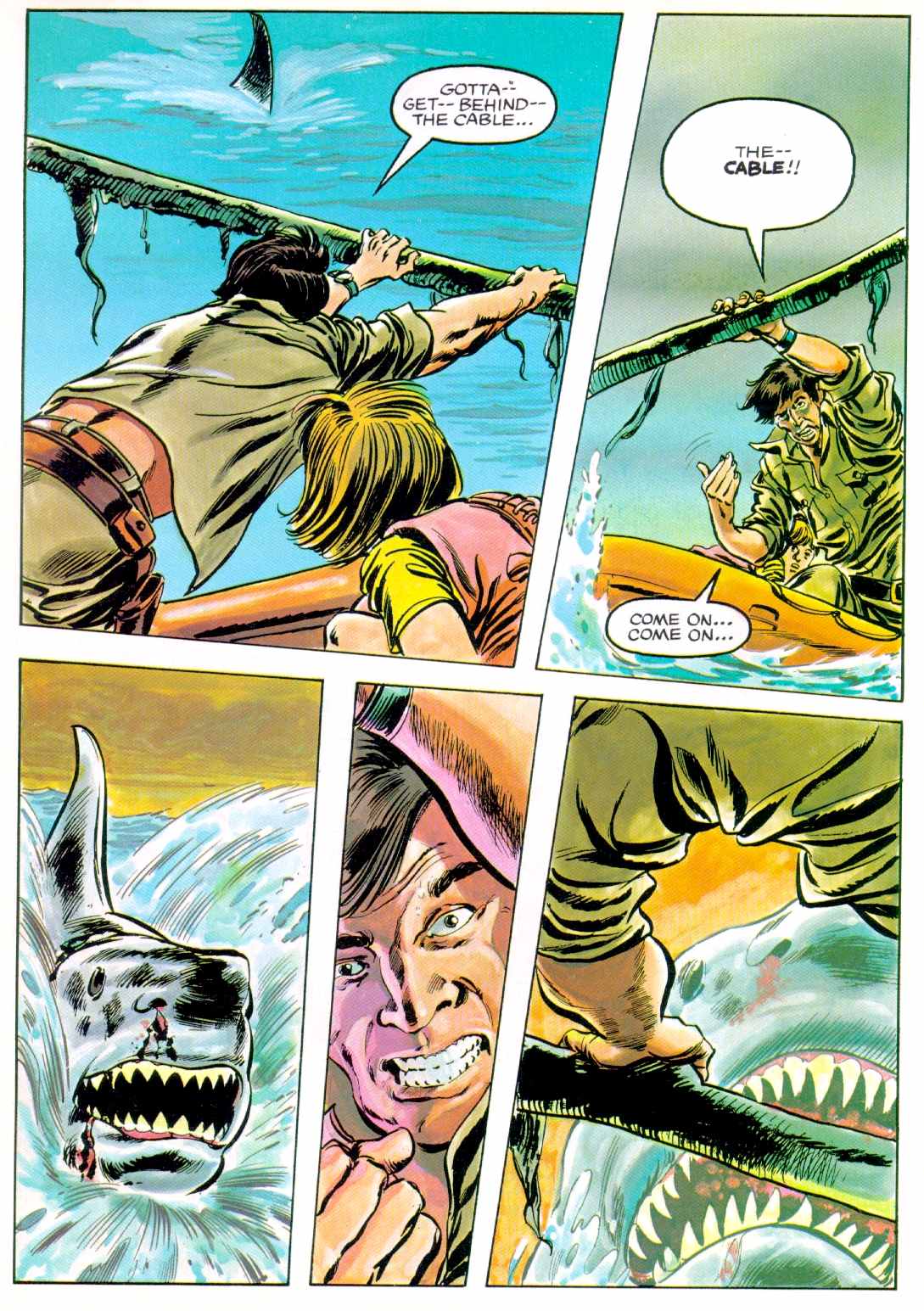
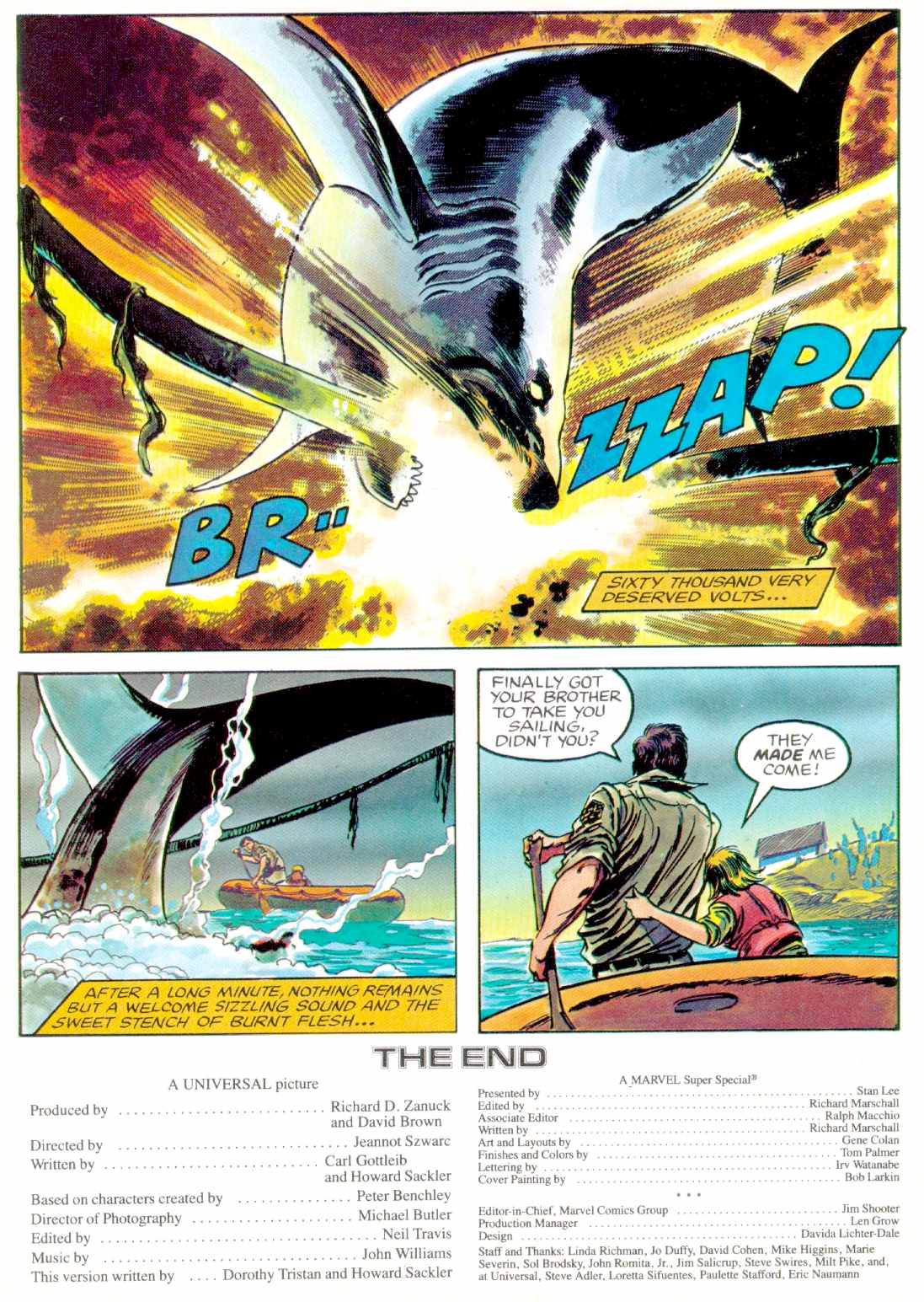
Well
finally we were put out of our misery in the film version, as Brody
tempts the shark to bite a power cable, using himself as bait. The
finale is almost identical to the compressed air cylinder exploding in
the original Jaws, save for the method of killing. Not sure either is
plausible, where the cylinder would not have been prominent in the mouth
after first swimming away and then coming in for another attack on the
virtually defenseless Brody.
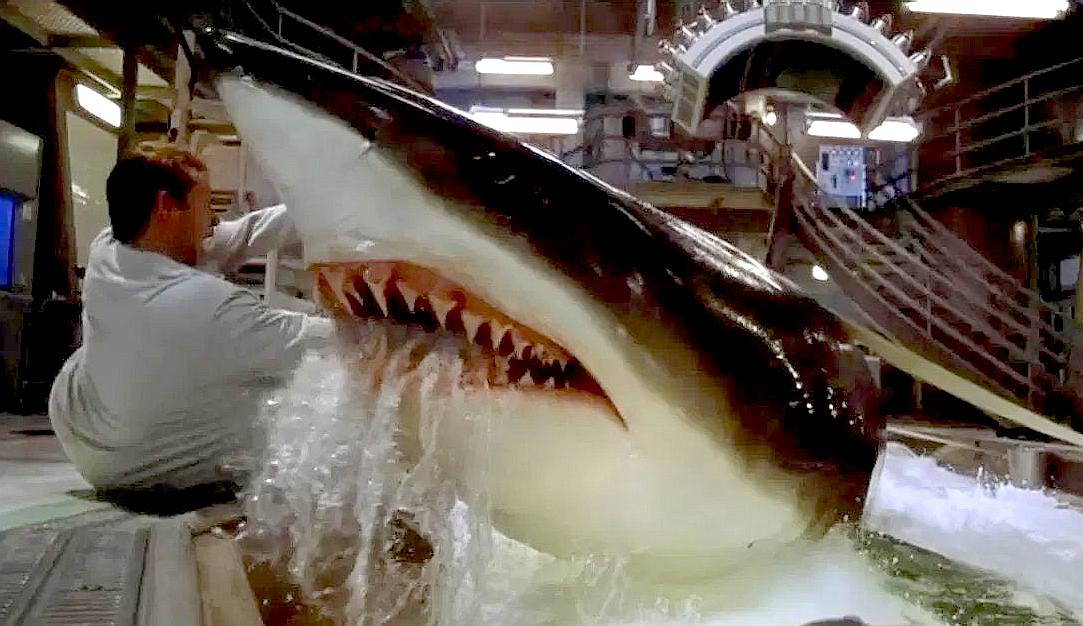
The
animatronic sharks in this movie are beautifully made. It is a shame
that what could have been a superb theme, was somewhat spoiled by the flippant
direction, replying on special effects to generate the tension just did
not work for us. The approach in Jaws was far better, almost a blessing
that Bruce malfunctioned, so denying Spielberg that way out - and he
needed this film to work.
SHARK EXPERT BUSTS MOST RIDICULOUS HORROR MOVIE
MYTHS
DEEP BLUE SEA 1999
In the decades since Jaws landed in theaters, horror movies have attempted to exploit sharks in a number of ways, with almost every year seeing a new adventure emerge which aims to replicate the success of the Steven Spielberg film. While some of these films find success, none have come even close to capturing the public's attention as effectively as the film based on Peter Benchley's novel, forcing studios to try even harder to concoct crazy concepts to misrepresent the fish. Despite some of these films managing to sneak some actual facts about sharks into their narratives, nearly all of them misrepresent the creatures in a number of ways.
For more than two decades, director Jeff Kurr has been delivering Discovery Channel fans some of the most compelling specials depicting the realities of the animals, including Diary of a Shark Man, Great White Serial Killer, and Legend of Deep Blue. Of all of his projects, none are more famous than the groundbreaking Air Jaws series, in which Kurr captured footage of giant great whites launching completely out of the water in hopes of capturing seals, delivering fans some of the most awe-inspiring footage of the fish ever recorded.
In honor of Shark Week kicking off this Sunday, August 9th at 8 p.m. ET with Air Jaws: Ultimate Breach Off, ComicBook.com collaborated with Kurr to break down the myths seen in a number of contemporary shark films. Given that an entire MythBusters episode broke down the details of Jaws, we took a look at more modern films in the annals of sharksploitation.
The Movie: A group of researchers aims to cure Alzheimer's Disease but inadvertently create super-smart sharks, who wreak havoc on the research facility.
The Myth: Sharks were chosen as research subjects because their brain activity never reduces with age and they are impervious to cancer.
The Reality: "I've done some filming with Mote Marine Lab in Florida, and Dr. Carl Luer was studying whether or not sharks actually get cancer. I believe that's actually a myth," Kurr confirmed. "I think that sharks do get cancer, although it's extremely rare."
While they might not be quite as immune as the film claims, Kurr noted that they do heal faster than other animals.
"They have, obviously, being around for the millions of years that they have been, they have very robust immune systems, and they're very resistant to diseases. They heal up incredibly fast," the director detailed. "I've seen sharks that were, for whatever reason, maybe mating scars, were completely chewed up and torn up. And a couple of weeks later they were completely healed. So I know there are incidents of sharks that have been seen with tumors, and occasionally get cancer, but it's extremely, extremely rare."
He added, "As far as brain function, I'm not too well versed in that, but I do know that white sharks actually have relatively small brains for their giant size, yet they have incredible sensory organs that are driven by the brain. Sight, smell, lateral line, all these incredible things. Maybe they can't reason, but they definitely can do what they need to do extremely efficiently. And they're amazing at hunting and killing things."
The Verdict: Inaccurate
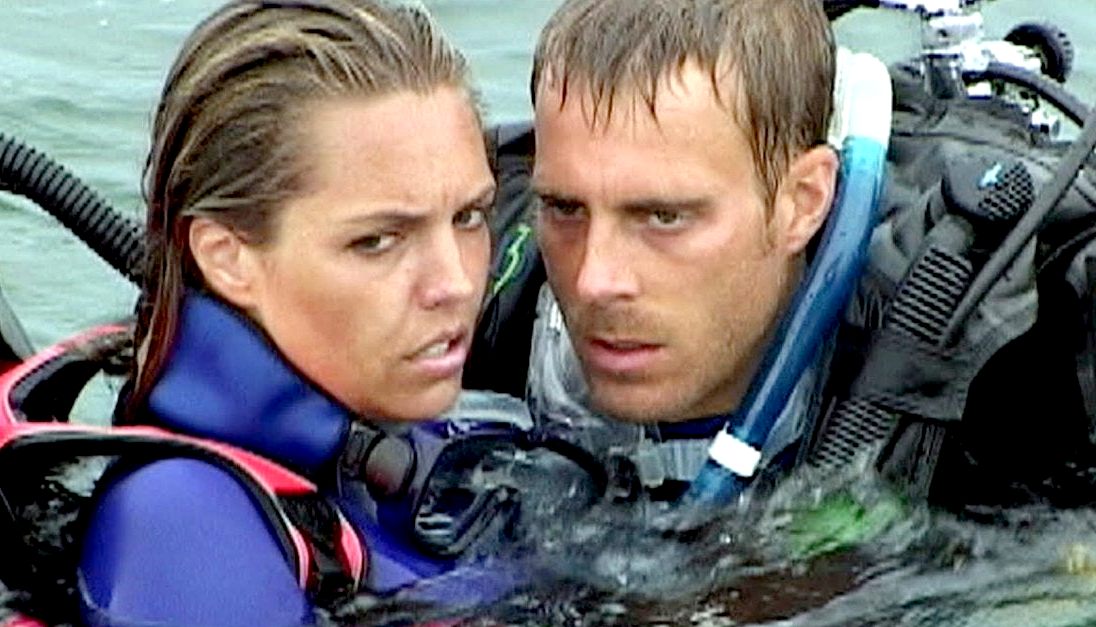
OPEN WATER 2003
The Movie: A pair of scuba divers are accidentally left in the open ocean during a diving trip, with one dying from shark wounds and the other drowning. The couple's camera is discovered in the stomach of a shark.
The Myth: Sharks are garbage disposals of the ocean and will eat anything, including electronics.
The Reality: "Most sharks actually have pretty strict diets, and they're not the swimming garbage cans that they've been portrayed as in the media," Kurr claims. "I do know that a tiger shark seems to have a more varied diet. They'll eat birds, they'll eat dolphins. In fact, we did a necropsy on a tiger shark in South Africa. One tiger shark had a dolphin, I believe it was a pelican, a seal, and a bunch of fish in its gut when we opened him up. He was already dead. We didn't kill him for the sake of doing that. So that just shows you the incredible variety, but that's just one species. The tiger shark, which is definitely a scavenger."
Despite being one of the biggest shark species, the same strict diet is followed by great whites.
"White sharks are extremely picky. And what's interesting to me is that certain times of the year, they have absolutely turned their noses up at a cape fur seal. They don't want to eat the seals," the director explained. "They switch to fish, and stingrays, and other things like that. You could have seals swimming all around them and they won't touch them. And there's been times where we've been out on location, we've had these beautiful, fresh tuna baits to bring in the white sharks. You absolutely have to have bait to film a white shark, because otherwise they want nothing to do with you. And they reject the baits. If the baits get a little bit old and they sit in the sun and get a little past their expiration date, the white sharks will actually turn their nose up. So that's a really great example of how picky these animals are when it comes to what they eat, and how their diet is very specific based on where they're at, and the time of year. And sometimes they're just not hungry."
He added, "I could not see one eating, even the tiger shark, eating a camera. I find that pretty implausible."
The Verdict: Inaccurate
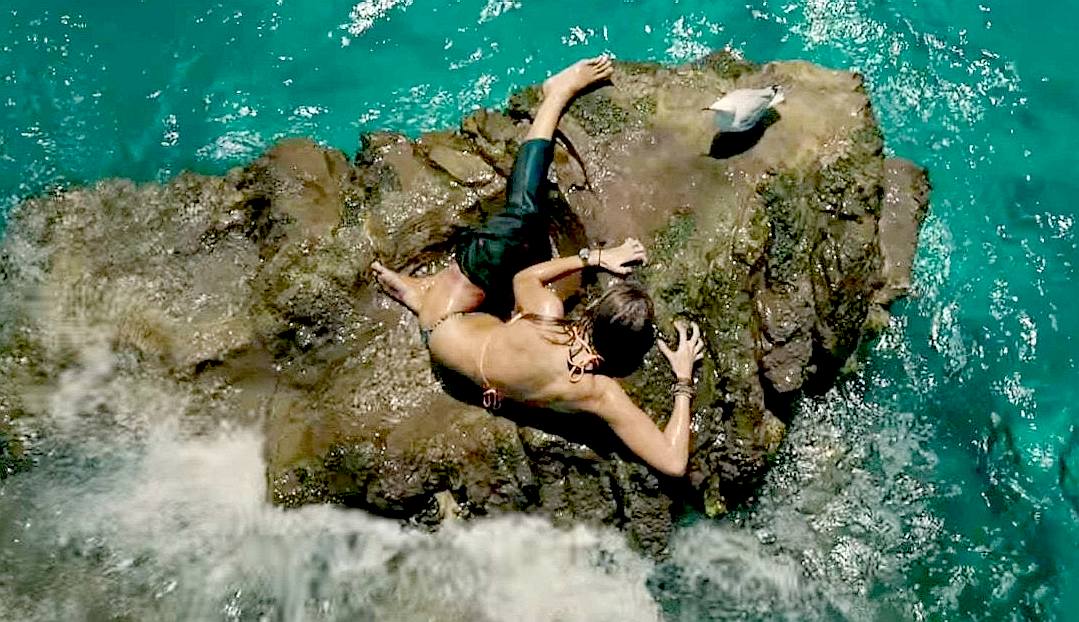
THE SHALLOWS 2016
The Movie: A surfer gets stranded on a rock near the corpse of a dead whale, with a great white refusing to leave the area and eating multiple other surfers it encounters just off the shore.
The Myth: Sharks will stick to one area where they know has food and eat anything in their path.
The Reality: "I know from personal experience that whale is like catnip to white sharks," Kurr explained. "Whenever there's a whale that dies, especially off the Pacific coast of California, it seems like there's four or five white sharks that are gorging themselves on the blubber. And that just actually happened a few weeks ago. There was a dead whale off Southern California, and there were white sharks all over it. So they definitely
love whale
meat. And they will have a tendency to hang around an area where they've had success in feeding."
While the concept of a shark sticking close to one area where there's a food they love is plausible, the filmmaker noted that sharks experience "food comas" just like the rest of us, likely slowing down their desire to eat more food that just happens to be nearby.
"Now I can imagine in the movie, The Shallows, after a shark had gorged on a whale, he might be so full that he might slow down the hunting mode," Kurr admitted. "And we also witnessed that in South Africa, when we had a dead whale, we had 27 sharks eating this whale, and they were all stuffed. They basically ate the whole whale in 48 hours. It was, I think, a 20-ton whale that was completely devoured. And the sharks, when they eat that much, we saw them turning on their backs, almost in a stupor. They were bouncing against the boat, acting really strange, like a food coma, basically. So I would imagine, if The Shallows was more realistic, the shark that was
eating the whale would have gone into a food coma and probably had no interest in scrawny, bony little people at that point, but of course, that's not a very interesting film if he eats the whale and he leaves. So the whale will definitely attract him, just after he gorged on a whale he's not going to eat Blake Lively."
The Verdict: Partially accurate
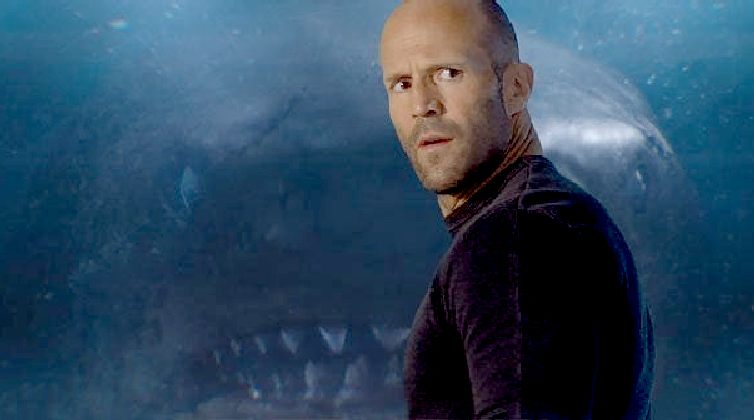
THE MEG 2018
The Movie: Thinking the species went extinct millions of years ago, a megalodon emerges and begins attacking anything in its path.
The Myth: A 60-foot shark could stay hidden in the depths of the ocean for millions of years with no one having proved its existence until now.
The Reality: "I would say that there's a 0% chance that there's a Meg out there, only because we would have encountered one, we would have seen it," the filmmaker expressed. "There's a lot of really cool stories and rumors, especially with the Japanese fishing trawler, somewhere in the North Japan sea, that supposedly they have encountered this 60-foot shark and it ate all their nets, and their traps, and everything.
You hear a lot of stories out there circulating around, but it's like UFOs. There's a lot of great stories, but how come there's no really solid evidence? I really want to see that video where the UFO lands on the White House lawn. I've never seen that except for in the '50s in those old sci-fi movies. And I've never seen the Meg footage. And there's just so many boats out there and people with cameras."
Clearly Kurr highly doubts such a fish could remain hidden for millions of years, but he did walk back his remarks slightly as to allow for even the most unlikely event to occur.
"Now, maybe I should say 99.9% chance that there's no megalodons, because who knows," Kurr clarified. "The ocean's a big place. They discover new species all the time. And there's new shark species discovered every day, but a 60-foot megalodon is pretty hard to hide."
The Verdict: 99.9% Inaccurate
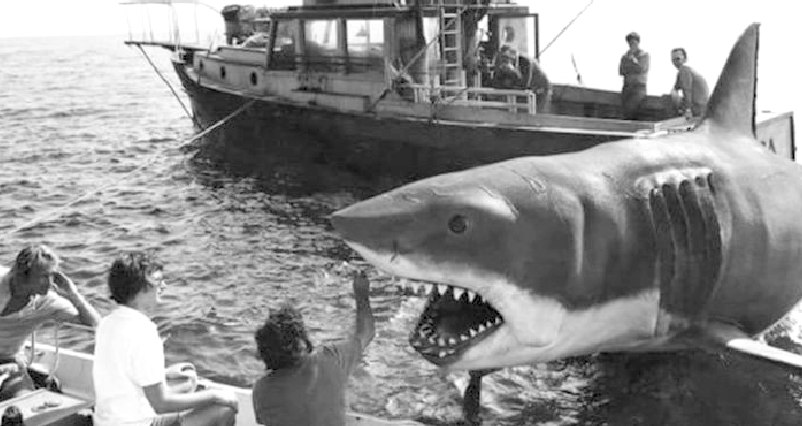
47 METERS DOWN UNCAGED 2019
The Movie: While exploring underwater Mayan ruins, a group of divers accidentally unleash a great white that has been living in caves with no light for so many years that it has adapted to have lost its vision, using its other senses to hunt.
The Myth: A species that is millions of years old could adapt drastically in a matter of thousands of years.
The Reality: "I'm not an evolutionary biologist by any means, but I would say that it's highly unlikely that a white shark would, first of all, be in [an isolated pool of water] like that in that situation," the filmmaker revealed. "What's he going to eat? How did he get there? And so on and so forth. But the fact that they've evolved in just a couple thousand years, just whatever they see in the dark, or hunt blindly, or whatever that is, that's an evolution that takes millions of years, I'm sure, and not a couple of thousands of years, but for a good story, what the heck? It is Hollywood. And maybe people were entertained by that. I didn't see that particular movie, but now you've piqued my interest. I'm going to have to go check that out."
He added, "That's probably the most far fetched of all of them."
The Verdict: Inaccurate
Bonus Busting- While Kurr claimed that 47 Meters Down: Uncaged seemed like the most unbelievable manipulation of facts, he also noted that the original film, 47 Meters Down, featured some absurd details about diving. In that film, two sisters go cage diving and when the cage malfunctions, it plunges them 47 meters to the bottom of the ocean, with a group of sharks swimming between them and the surface.
"The first 47 Meters was also pretty far fetched, just because, if you're a diver, how can they stay down there that long?" Kurr pondered. "That's pretty deep without being completely bent and embolizing, and all the stuff that happened in that movie. I think they need a shark consultant, or at least a diving consultant on some of these movies."
Kurr also pointed out that, while the events of Jaws are absolutely exaggerated, it does borrow elements of truth, confirming its status as the best shark movie of all time.
"You look at, as far fetched as the first Jaws was, it was actually based on true stories," the filmmaker pointed out. "The
Quint character is based on a real guy that I did a show on named Frank Mundus. The multiple attacks were based on the 1916 shark attacks off the coast of New Jersey. I think what makes Jaws so effective, compared to these other movies, is it's based in truth. Now, no sharks that I know of has ever sunk a boat like Jaws did, but there's a lot of realistic stuff in that movie."
By Patrick Cavanaugh August 5 2020
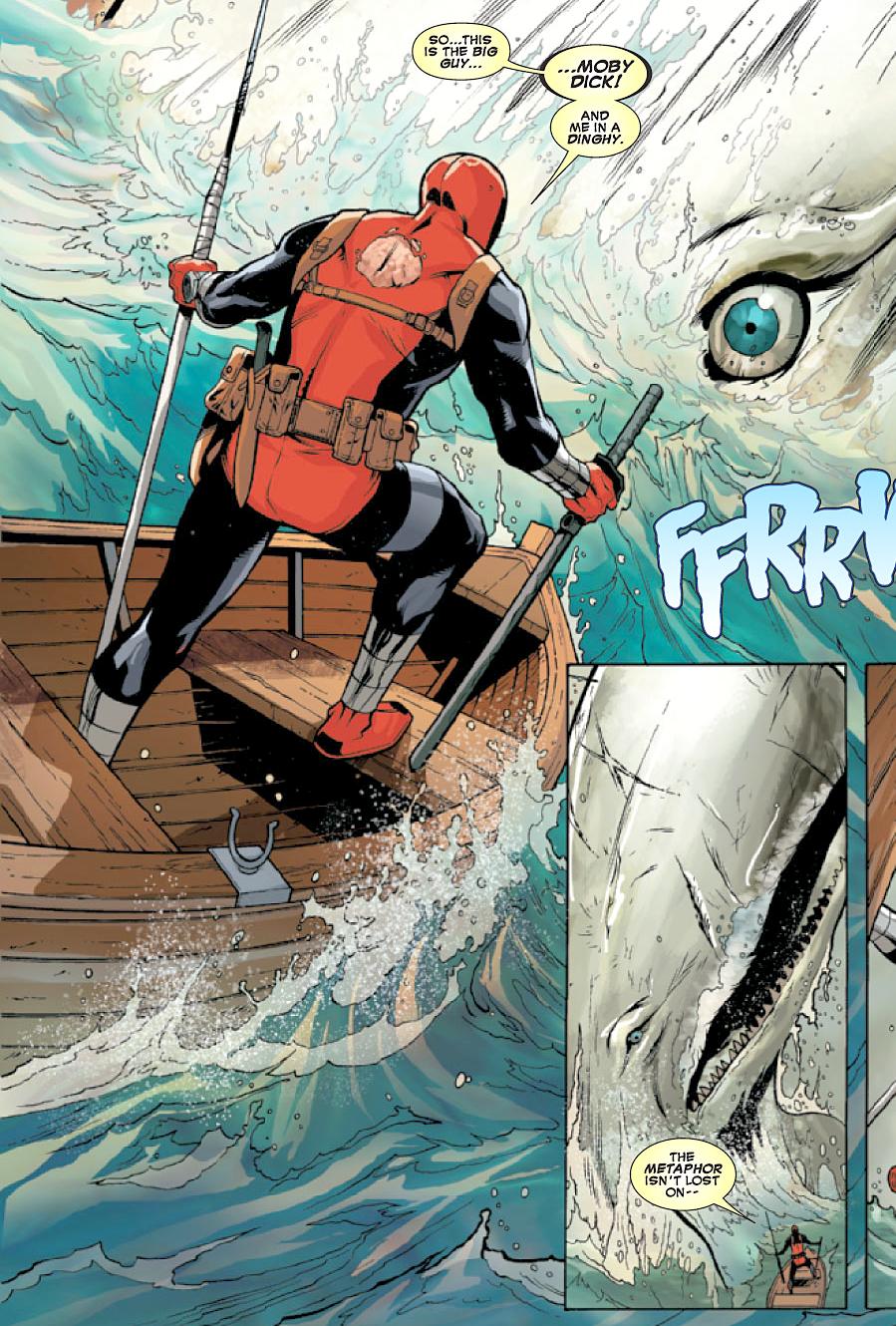
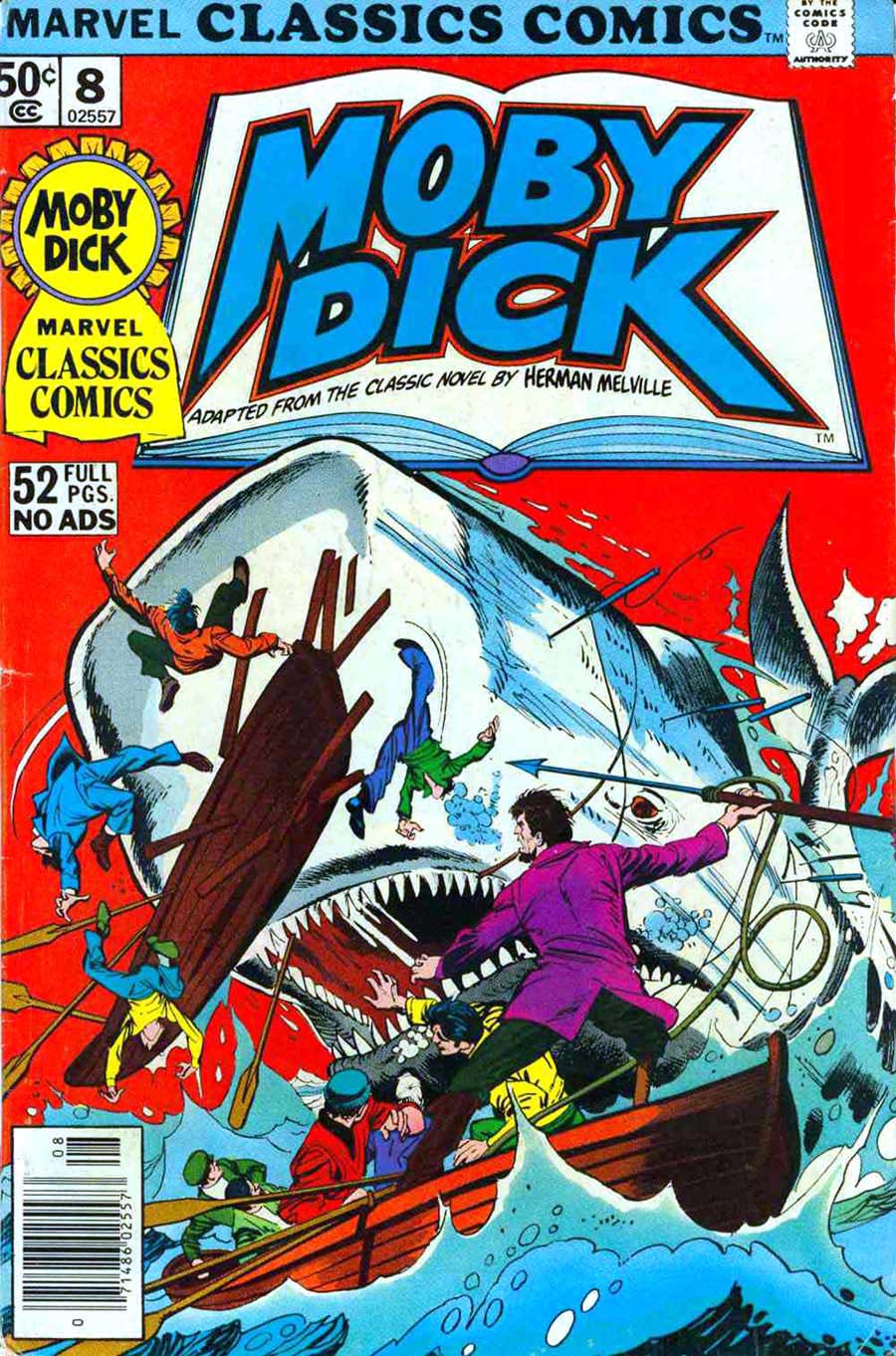
Marvel
illustrated Moby-Dick in a series, then gave Deadpool a shot. Even Disney comics had a go - each appealing to a
different age group, but all based on the Herman Melville classic. Kulo-Luna
is also based on the fact that a large enough whale can sink a small
ship, given the impetus. The difference is, that Kulo-Luna is set in the
future, and is an original tale based around climate and plastic issues.
Herman
Melville's classic tale of a giant albino whale, Moby
Dick was also turned into a graphic novel or two. Moby-Dick was based on
the sinking of the Essex
in 1820 and another real whale that sank around 20 ships (1838), called Mocha-Dick.
LINKS
& REFERENCE
https://www.facebook.com/sharkofwar/
https://comicbook.com/movies/news/shark-week-horror-movie-myths-jaws-shallows-deep-blue-sea/#2
https://thedailyjaws.com/blog/2019/2/4/bruce-the-shark-jaws-comic-book
https://villains.fandom.com/wiki/Great_White_Sharks
https://www.cbr.com/jaws-sharks-were-real-victims-of-classic-thriller/
Please use our
A-Z INDEX to
navigate this site




















